10 Types of Mango Trees (With Pictures)
-

- Last updated:

The world of mangoes is a deep and varied one. Mangoes and their varieties represent a deep rabbit hole that one can easily fall into. There are numerous species of mango plants and hundreds of varieties to locate and try all over the world. Mangoes are one of the oldest and most popular fruits ever grown by humans. They still make up a sizable portion of agricultural crops in Asia, and they are prized for their appearance, flavor, and refreshing qualities.
This guide will go over the difference between mango species and mango cultivars. There are numerous different mangos to dive into from places as far away as India, Australia, and Japan. Mangoes can be seen as delicious snacks, a fun hobby, and a commercial enterprise.
Mango Species vs. Mango Cultivar
There is a difference between unique species of mango trees and mango cultivars. A cultivar is a local variety bred for specific traits. These varieties are selectively bred for characteristics such as size, color, taste, insect resistance, and hardiness. Cultivars are not individual species but rather specialized varieties of a single species. A mango cultivar is similar to a dog breed. All dog breeds are the same species, Canis familiaris, but each breed is extremely different from one another. There are huge differences between a Boston Terrier and a Great Dane, yet they are the same species. The same goes for mango cultivars.
This article will cover ten of the most popular types of mango cultivars as well as the two parent species that nearly all mangoes originate from.
Two Official Species of Mango Tree
There are hundreds of unique mango cultivars. India alone features more than 300 varieties of mango. The USDA identifies over 400 mango cultivars from all over the world. Despite a large number of varieties, all of these mangoes typically originate from just two species of plant. Each of these plants is separate and unique, but there are only two official species from which all mango cultivars originate.
Each plant represents a different type of mango popular throughout the world. The first species represents the so-called Indian variety, while the second species makes up the Southeast Asian variety of mango.
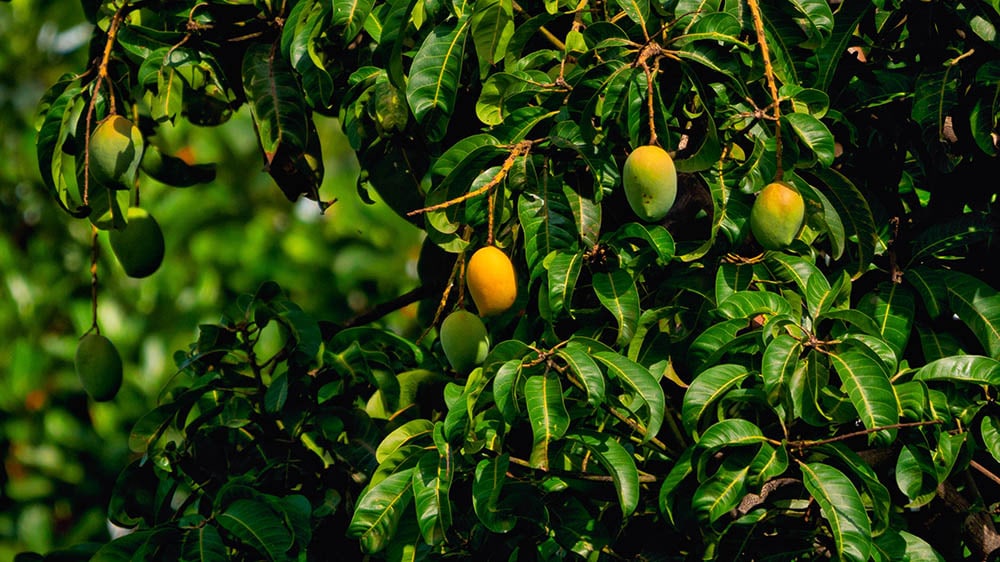
Mangifera indica
Mangifera indica is colloquially known as the common mango. This species represents the bulk of all mangos in the world and has birthed hundreds of unique cultivars. The mango is a large tree that grows up to 100 feet tall and 12 feet in diameter and is capable of producing hundreds of individual fruits. The common mango is the national fruit of India, Pakistan, and the Philippines. The tree is also recognized as the official arbor of Bangladesh. The widespread love and recognition this fruit has in this region speak to the long history and deep cultural relevance that it holds.
If you are planning on planting your very own mango tree, there is something you should keep in mind. First, mango trees are native to hot, humid subtropical climates and do not grow well in areas far from the equator. Second, mango trees are serious business. Mango trees grow extremely large and can live for a very, very long time. There are documented cases of mango trees continuing to produce fruit after 300 years. Planting and caring for a mango tree can be extremely fruitful and produce years of voluminous crops. Just make sure you are ready for the size and investment that these trees come with.
Mangifera caesia
Mangifera caesia is a separate, less common species of mango. It is known as the jack fruit or the white mango. While not as common, these plants are still widely used throughout Asia as a sweet treat and a base for juices and dips. This species is more widely cultivated in Southeast Asia, while the common mango is primarily grown in India. Countries that grow Mangifera caesia include Malaysia, Singapore, Indonesia, and the Philippines.
Popular Mango Cultivars
It would be nearly impossible to parse through the hundreds of unique mango varieties. In fact, some people have made just a venture their entire life’s work. The genus mangifera is so complex that there are dozens of species that are still in the process of being validated. It is no wonder that there are so many different types of mangoes.
We have pulled together a list of ten of the most popular varieties of mango cultivars. These varieties are grown all over the world and have different shapes, colors, tastes, smells, and appearances. However, this list is by no means exhaustive. Diving into the weird, wild and wonderful world of mango cultivars can be a hobby that can last a lifetime if you are so inclined.
The 10 Types of Mango Trees
1. Tommy Atkins
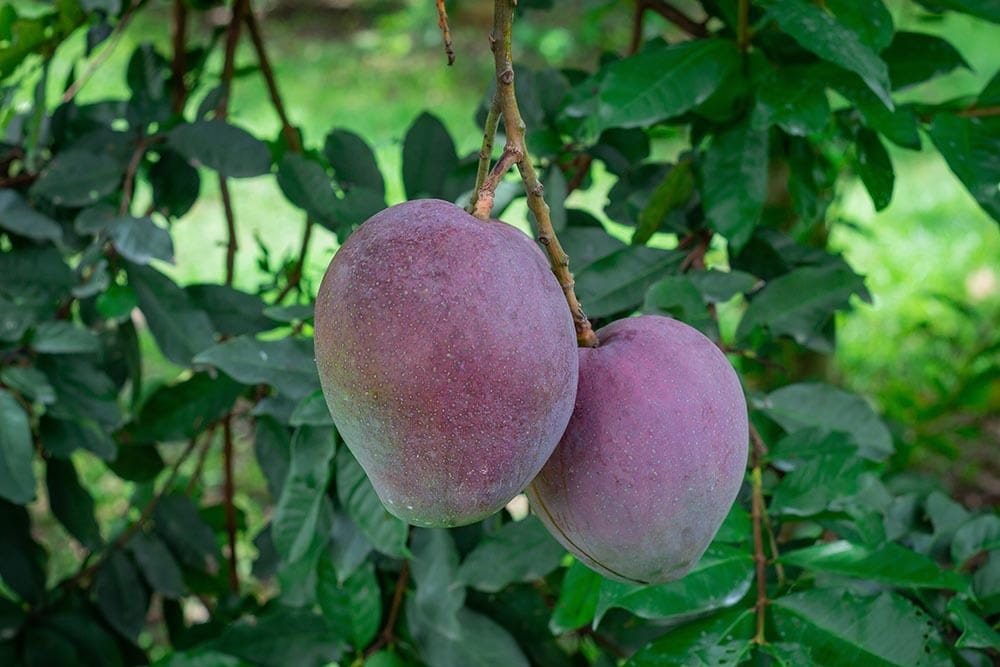
If you have bought a mango in the Americas, it was very likely a Tommy Atkins mango. This variety has exploded in popularity and is now one of the most common cultivars found in the world. Tommy Atkins mangoes are largely grown in Florida, and they can be found throughout the United States, the Caribbean, and South America.
Tommy Atkins mangoes became popular because they have an extremely long shelf life which makes them an ideal choice for shipping and storing. Some mangoes do not keep for very long, making it hard to ship them overseas. Since the Tommy Atkins can last weeks inside a storage unit, they are the perfect mango for international distribution, hence their range and popularity.
The inside of Tommy Atkins mangoes is bright yellow, pulpy, and sweet but not overbearing.
2. Chok Anan
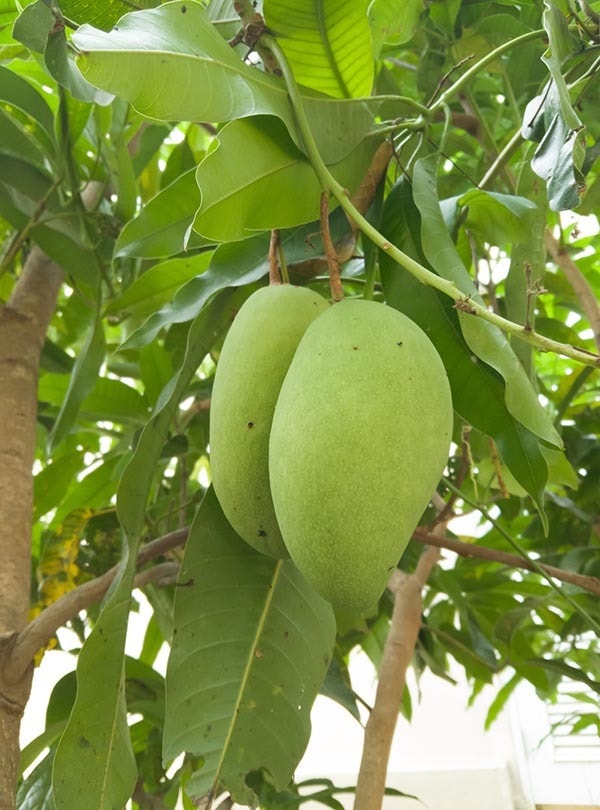
Chok Anan are popular mangoes found throughout the Indian subcontinent. These mangoes are lovingly referred to as the ever-giving mango trees or the ever-bearing tree because of its ability to produce fruit year-round. Most mango trees produce a heavy crop in the summer. Chok Anan mangoes produce a crop in both the summer and the winter. This makes them a popular variety for commercial growers looking to reap two crops in the same year rather than just one.
Chok Anan mangoes have hard inner pulp and have a varying level of fibers depending on how ripe the fruit is when it is opened.
3. Palmer
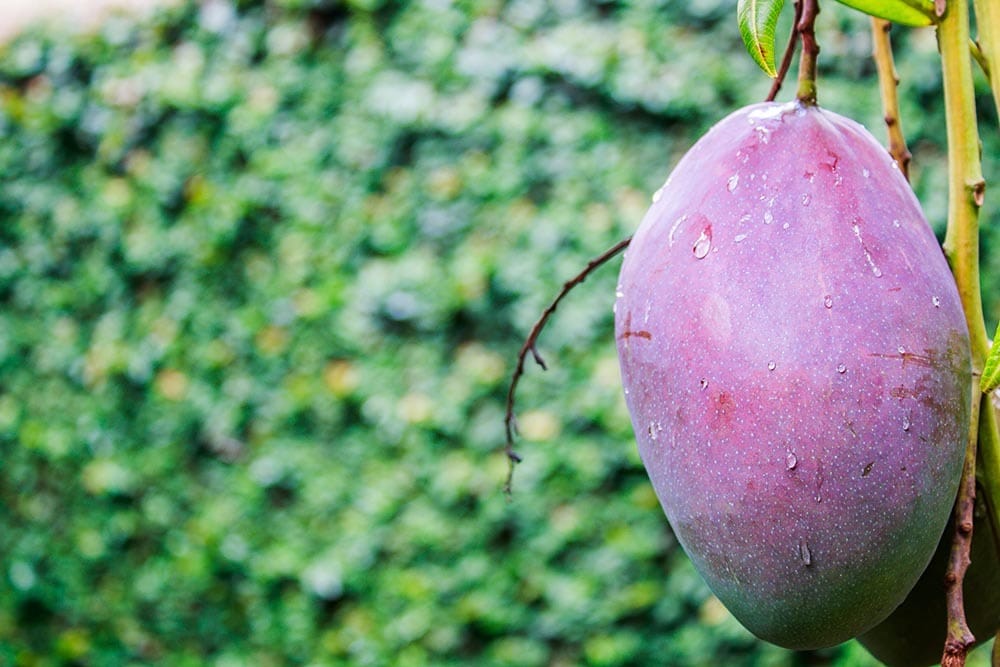
Palmer mangoes are one of the largest types of cultivars. These mangoes can weigh as much as two pounds. The large size and smooth innards make Palmers one of the best mangoes to use in smoothies. Palmer mangoes are grown and distributed in Florida and Brazil. The outer skin of the Palmer mango is a pleasant mix of red and green, while the edible flesh can be a bright yellow or rich golden color. Palmer mangoes are also grown in small numbers in Australia in addition to the Americas.
4. Haden
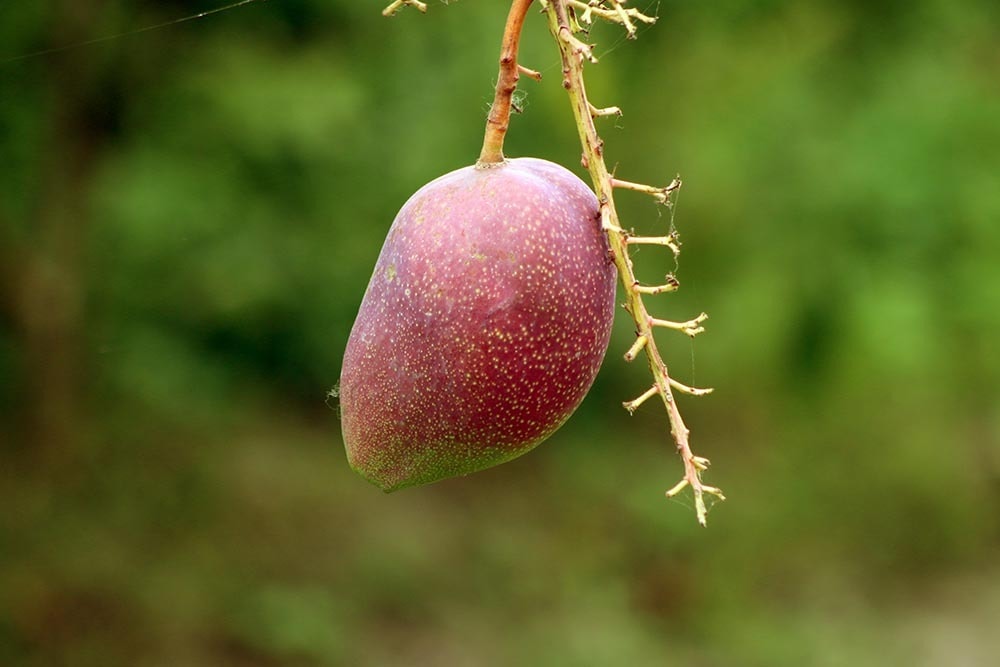
Haden mangoes are one of the first species of mango to be successfully cultivated in North America. It originates in Florida and is named for the first person who planted it. The original Haden mango tree still stands in Coral Gables, Florida. Most of the North American varieties of mango originate from this single mango tree.
Haden mangoes are considered to be a great all-purpose mango. They can be eaten raw, used in smoothies, added to salads, or turned into jelly. It is prized for its characteristics by chefs because it does not turn mushy like other cultivars. This allows Haden mangoes to be used for a greater number of purposes.
5. Bombay Green

Bombay Green mangoes are popular in northern India, where they originate from. The name is derived from the fact that Bombay Green mangoes are always green. They do not change color as they ripen as other mangoes do. This can make it hard to tell if they are ripe, but when they are eaten at the proper time, they produce a delectable flavor. Bombay Green mangoes are also extremely aromatic and can often be smelled before they are seen.
6. Dasheri
Dasheri mangoes are one of the most popular commercial crops in Southeast Asia. They have been cultivated in India since at least the 18th century making it one of the oldest cultivars available on the market. These mangoes can be found in markets from New Delhi to Nepal. They have a long growing season and are easy to export which contributes to their widespread availability. They are grown in a large area all over India and are extremely popular. The outside of Dasheri mangoes is pale green, while the insides are a fleshy peach color.
7. Neelam
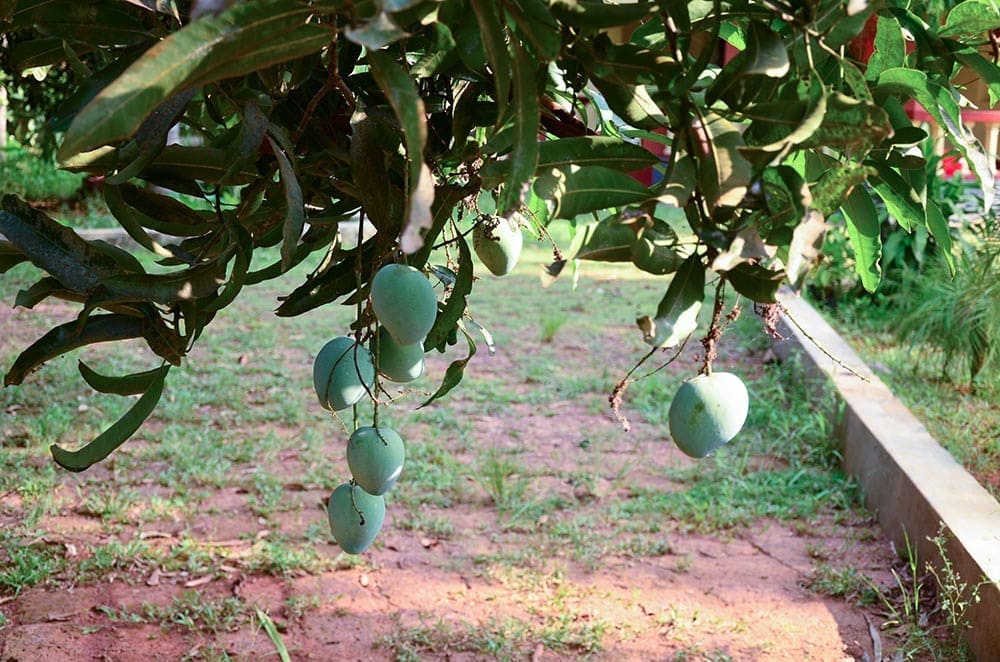
Neelam mangoes start bright green and gradually turn yellow as they ripen, not dissimilar from a banana. These mangoes should be plucked when green and allowed to ripen at room temperature. The riper they get, the sweeter they get.
These mangoes have a reputation for being extremely sweet. Sometimes even too sweet. They have a pleasant smell when they are ripe, and they keep for a very long time when on the shelf, making them a popular choice at home. The insides are brightly colored and have no fibers. If you find Neelam mangoes too sweet, try eating them earlier before they get too ripe.
8. Badami
Badami mangoes, also sometimes called badam mangoes, are one of the most popular varieties of mango in India. The fruit largely hails from the Indian state of Karnataka. The fruit is bright yellow and grows to large sizes. The taste is extremely sweet and pleasant. The size plus the taste makes Badami mangoes very popular where they are grown. The insides are generally harder than other varieties of mango and have very little fibrous pulp.
9. Totapuri

Totapuri mangoes are known for their unique shape and odd flavor pallet. Many people describe the totapuri as simultaneously sweet and sour, almost like candy rather than a fruit. Totapuri mangoes are also unique in that they have very pointy ends. Most mangoes have smooth rounded edges. The different shapes and curious flavor profile make totapuri mangoes one of the more interesting choices on this list. Totapuri mangoes are generally found in India, where they are natively grown and cultivated.
10. Irwin

The Irwin mango is one of the most widely distributed cultivars in the world. It can be found anywhere from Japan to Australia to the United States. When the Irwin mango is ripe, it turns bright red, letting everyone know that it is ready to eat. The innards have very little pulp or fibers, making it a great variety to use in a smoothie. Irwin mangoes are very popular in the United States and can be consumed raw when ripe. In Japan, Irwin mangoes are known by a local name, apple mango, and are largely found in the southern islands such as Okinawa.
Conclusion
Each cultivar of mango is both similar and strange to the others. Most mangos have a round body and sweet flavor, but the details of each can vary wildly. Mangoes are prized foods all over the world and are integral parts of various cultures. Finding, tasting, and growing different varieties of mango can take a lifetime. If you are someone interested in mangoes, there is something for everyone.
Featured Image Credit: Jametlene Reskp, Unsplash
Contents

